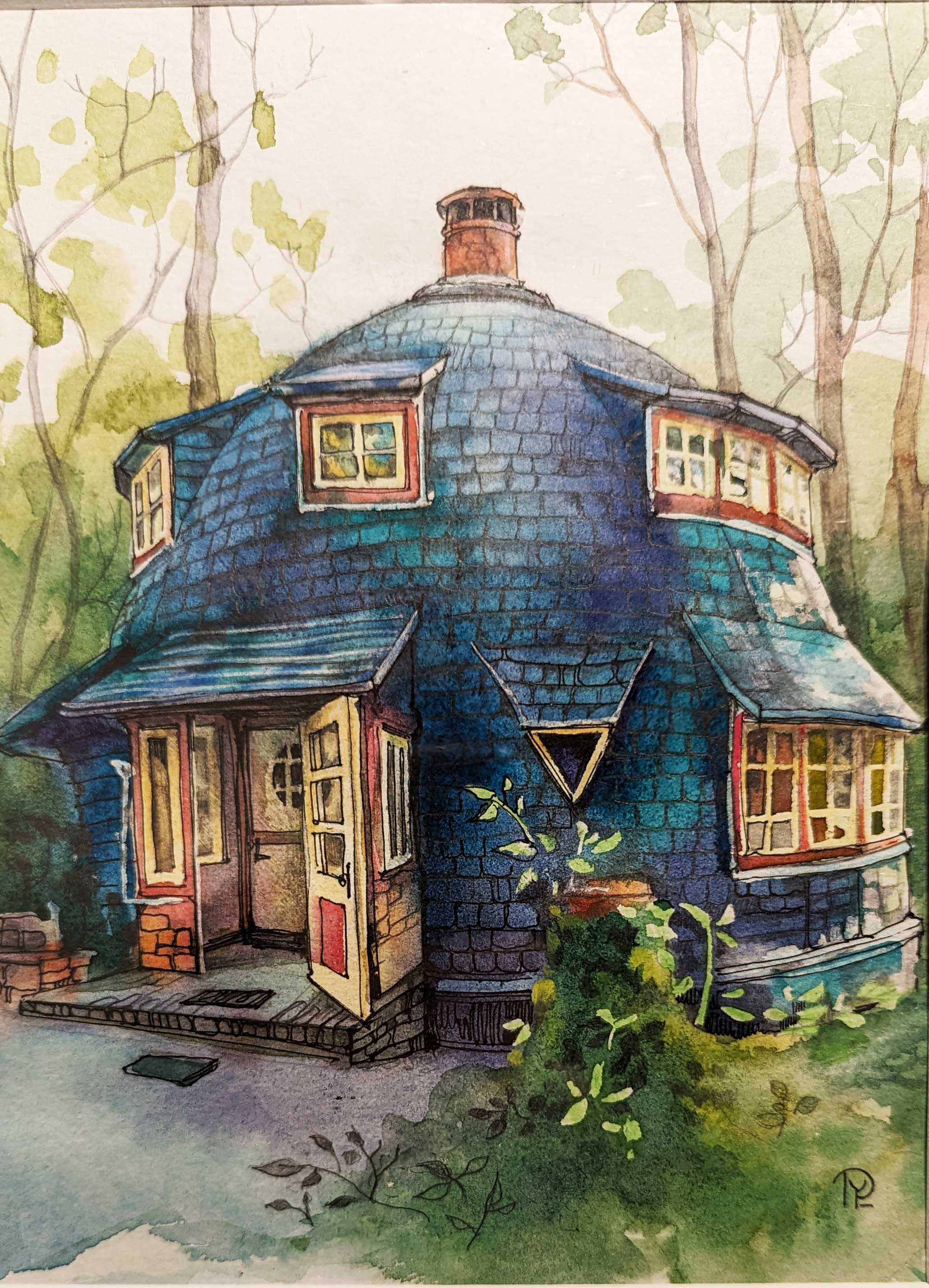Käseglocke
Original Aquarell / Tusche
ca. A4
Unikat
The "Käseglocke" (German for "cheese bell") is a distinctive, dome-shaped building located in the artists' colony of Worpswede, Lower Saxony, Germany. Constructed in 1926 by writer and graphic artist Edwin Koenemann, the design was based on plans by renowned architect Bruno Taut. The building earned its nickname due to its resemblance to a traditional cheese cover.
The structure features a bell-shaped wooden exterior resting on a concrete foundation, with a diameter of approximately ten meters and a living area of about 130 square meters. The central hall, heated by a fireplace, serves as the focal point, surrounded by a bedroom, kitchen, and small toilet on the ground floor. The upper floor houses two small guest rooms and a larger studio space.
After Koenemann's death in 1960, his wife Editha continued to reside in the house until her passing in 1993. In 1994, the association "Freunde Worpswedes e.V." acquired the building, and following extensive renovations, it was reopened in 2001 as a museum dedicated to applied arts and crafts. The museum showcases a collection of handicrafts, including original pieces of glass, ceramics, metalwork, weavings, porcelain, and furniture by artists such as Heinrich Vogeler and Bernhard Hoetger.
As of April 2025, the Käseglocke is open to visitors on Saturdays, Sundays, and Mondays from 1 PM to 5 PM. During the winter months, until March 30, it operates from 1 PM to 4 PM. The entrance fees are €4 for adults, €2 for students and individuals with disabilities, and €1 for schoolchildren.
This architecturally unique building stands as a testament to early 20th-century experimental design and continues to celebrate the rich artistic heritage of Worpswede
Alle Preise inkl. MwSt zzgl. Versandkosten
